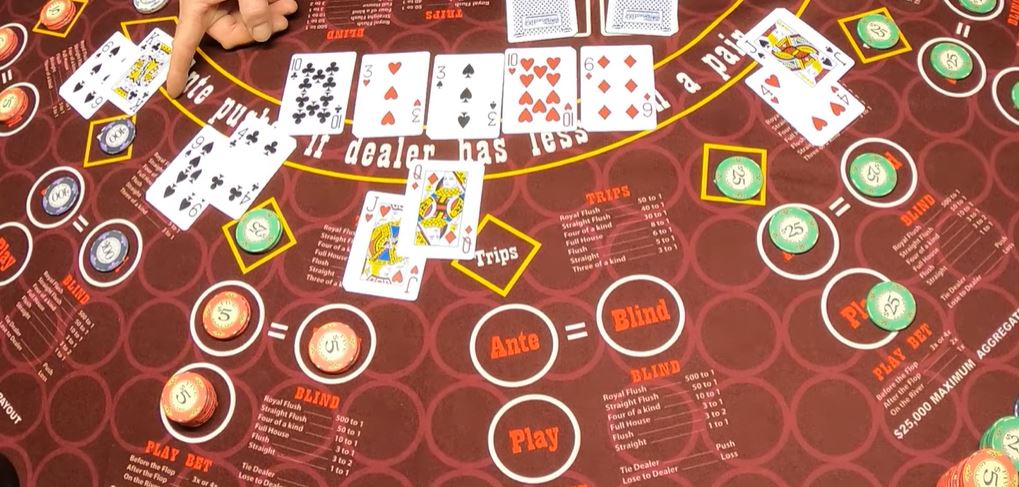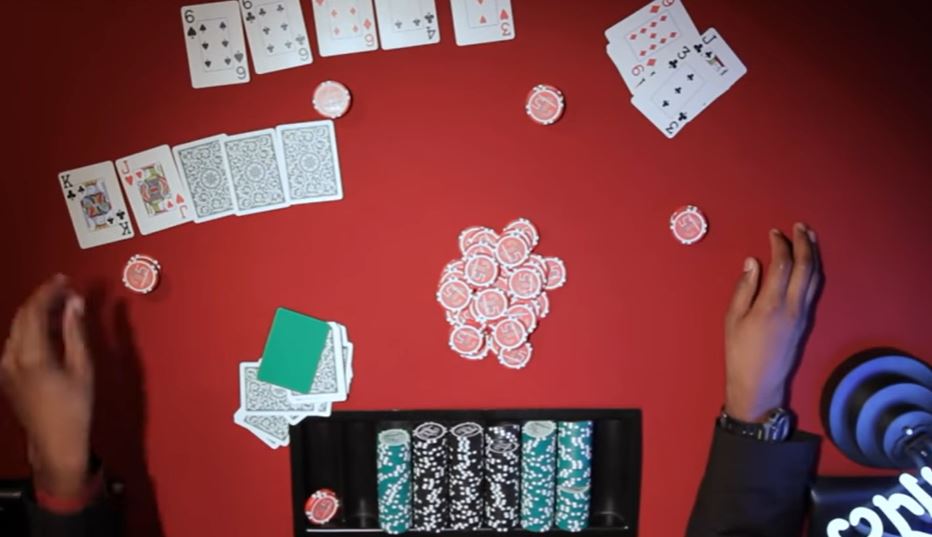A Guide To The Poker Styles And Strategies For Beginners
There are many different types of poker, and each has a dedicated community that enjoys their variant. Most poker variants use the same hands, such as the royal flush and the straight flush.
Bluffing and calculating odds are significant aspects of poker, making it a favorite game for movie dialogues. Poker is a social game that takes intelligence, study, and experience to master.
Variations on the rule set have kept the game fresh and appeal to different segments of the poker community. Whether you’re playing the most popular game, Texas hold’em, or the classics like a 7-card stud and 5-card draw, there’s a variant that’s calling your name today.

Texas Hold’em
Texas hold’em is the most popular poker game by far. The game is easy to learn, with classic poker hand ranks, five community cards, and only two hole cards. It’s typically a no-limit game, with last-ditch all-ins creating do-or-die excitement. This version of poker tends to focus on bluffing and player personality and makes excellent TV.
Texas hold’em is the game that started the poker boom in 2003. Since the 2000’s Texas hold ’em has been the main poker variant that most players know and play. You’ll find many tables and a wide variety of stakes available at casinos.
The Popularity of Texas Hold ’em
One factor that makes Texas hold’em so popular is its inclusion in the World Series of Poker. Chris Moneymaker’s win as an amateur at the 2003 WSOP was one of the main factors behind poker’s recent popularity. Moneymaker’s win showed recreational poker players that they could get in on the action and go all the way to the top.
Holdem is easy to follow as a spectator because each player only has two hole cards. Since the hole cards are limited, the action centers around bluffing and aggressive, dominating bets.
Because of the popularity of Texas hold’em, it’s always easy to find tables to play. If you only play one variety of poker, Texas hold’em is a good bet.
How to Play Texas Hold’em
Texas hold ’em is easy to learn but challenging to master. The popularity of hold’em means that there are many books and guides available, and most tournaments will be only or primarily hold ’em. There’s always someone to watch and learn from, and discussion groups always have people discussing the game.
Most good players will play tight, which means they will only play the very best hole cards. Because they are looking for a narrow range of hands, these tables see very few flops and showdowns.
- Play starts with a small blind and a big blind ante. After the two mandatory antes, each player receives two hole cards.
- Pre-flop, each player only knows their personal hole cards and does not know the community cards or the other players’ hole cards. The first round is critical because each player tries to guess the other players’ hands based on their history and the raises and folds they make.
- Since the first two players after the dealer button are the small and big blinds, the action starts with the third player after the dealer. This player is under the gun because they have the least information.
- As the first round of betting progresses, players pay attention to villain folds and raises. By seeing how aggressively they play, the hero can get a feel for their holes.
- In the second round, the first three community cards, called the flop, are delt and another round of betting starts with the big blind. The three flop community cards are used with the two-hole cards to make the best hand possible.
- Betting continues for two more betting rounds. A fourth community card called the turn and a fifth community card called the river are dealt and bet.
- After the final round of betting, the players make the best five-card hand possible from their two hole cards and the five total flop, turn, and river cards.
What are the major strategies for Texas Hold’em?
A wide range of players love Texas hold’em, but personality matters in this game, and some personality types do better than others. Texas hold’em has charts of hand odds that professional players will memorize. What players do with those odds depends on their personality.
Tight players will most likely stick with the mathematical odds, while loose players are more willing to go with their gut. Top pair and low-ranked hands take most pots, so tight players wait for very high odds cards in their hole and fold after a bad flop.
Even though tight players tend to do very well, personality is the crucial factor in Texas hold’em. Heros are trying to guess their opponent’s hole cards by analyzing recent actions compared to the villains’ historical playing style. Players may also checkout advanced poker strategy that used by professional poker players such as continuation betting.
Loose-aggressive players who bluff a lot and play a lot of weak hands will develop a reputation for reckless play, and other players will take that into account. If a loose-passive player who plays weak hands with calls suddenly starts raising, they’re going to see their opponents fold before the pot gets very large.
Tight-passive players can do well in Texas Hold-em by using an analytical style and pulling the fish in slowly. The meta currently favors tight-aggressive play, though. Avoiding costly mistakes while knowing when and how to intimidate other players into folding give the tight-aggressive players the edge in bluffs.
Developing a playing style and being recognized is the x-factor that makes hold’em players so loyal. Texas Hold ’em is a social game where knowing your opponent’s personality is as important as memorizing charts of mathematical odds.
Who should play Texas Hold’em?
You should seriously consider playing Texas hold ’em if you want to be a part of the largest poker community or if you would like to play in tournaments. There are tournaments and poker communities surrounding some of the other poker variants, but nothing comes close to the size and depth of the Texas hold’em community.
Texas hold’em lends itself to spectated play. With only two hole cards, it’s easier to keep track of what a large table of players is doing. In addition, Texas hold’em strategy strongly lends itself to around aggressive players and big personalities that make great TV.

Omaha Hi
Omaha Hi is the second most popular style of poker. In contrast to Texas hold ’em and Carribean Hold ’em Poker, there are usually pot limits, and the hands are stronger with much higher variance. Omaha Hi is an exciting game but doesn’t lend itself nearly as well to commented TV and video compared to hold’em.
The Popularity of Omaha Hi
Omaha Hi is popular and well known, but you’ll have a little more difficulty finding a table than with Texas hold’em. It’s popular with players who like a looser style of play that relies a lot more on luck.
One of the benefits of Omaha Hi play is that you’re much more likely to see the showdown. It’s a much faster game, and hands are often similar in strength, giving exciting variance.
A second-best flush or straight is often the losing hand in Omaha Hi. Bluffing is less critical than in Texas because players can have a genuinely excellent hand but still lose to a similar but slightly better villain.
Many players find the fast play, high variance, loose tables, and showdown uncertainty very exciting.
How to play Omaha Hi
Omaha Hi is very similar to Texas hold’em, except that players have four hole cards instead of two. Players must combine two of their hole cards with three community cards when making their hand at showdown.
What are the major strategies of Omaha Hi?
The two extra hole cards seem like a slight difference, but they completely change the gameplay. Players are much more likely to get a flush or straight, making stronger hands and decreasing the importance of bluffing and increasing variance.
Omaha players with a strong hand know that their opponents also have good odds for a good hand. Although pot-limited Omaha, or PLO, removes the all-in option, it does have large pots because of the looser play. More players seeing the flop and river means more money for the winner.
Omaha is a loose game with high variance. It’s less analytical than hold’em and more gut-wrenching. You win big pots because more players are in the pot post-flop, but you often lose with a solid hand.
Who Should Play Omaha Hi?
If you want a game where the race comes down to the wire, and you’re stacks of poker chips swing up and down in a hurry, you might like Omaha Hi. It’s thrilling and fast. You’ll see the full range of betting rounds much more often, and it becomes a game of draws as you watch the community cards develop.

Omaha Hi-Lo
Omaha Hi-Lo is similar to Omaha Hi, but each pot has up to two winners, and low hands are as favored as high hands. The option to go low or go high to win is novel and different enough to keep Omaha interesting for players used to grinding in other games.
The popularity of Omaha Hi-Lo
Omaha Hi-Lo is much less common than Omaha Hi, but the ruleset results in more frequent winning hands and a different way of thinking than hold’em and Omaha Hi.
It’s worth learning and playing Hi-Lo because of its unique strategy and novel approach to hand-building.
How to play Omaha Hi-Lo
The game is identical to Omaha Hi, except that there will be up to two winners. The high winner is the same as in Omaha Hi, but the low winner will be the player with the lowest hand, which doesn’t have any cards higher than 8.
Because it’s possible to have a table of players who all have a card higher than 8, sometimes there will be only one winner. The pot can grow quite large if many players try to make a high or low hand.
What are the major strategies for Omaha Hi-Lo?
Players can choose to either build a high hand or a low hand. Low hands can’t exceed 8, making them slightly more dangerous than high hands.
In other ways, the same strategies that work in Omaha Hi also work in Omaha Hi-Lo. You’ll have to split the pot in many cases, but more players can stay in hands, and you’ll end up winning more partial jackpots.
Who should play Omaha Hi-Lo?
Omaha Hi-Lo is different and fun. Bluffing is less of an issue, so players who bluff poorly have a better chance in Hi-Lo. Omaha Hi-Lo isn’t the main game you’ll see, but it keeps the poker world spicy.

7-Card Stud
7-card stud is a classic poker game that was the most common form of poker until the poker boom made TV-friendly Texas Hold ’em the dominant poker variation.
The Popularity of 7-Card Stud
7-card stud was long the most popular form of poker. Play is similar to Texas hold’em, but it’s less television-friendly because each player has their own face-up cards.
Seven-card stud isn’t as popular as it used to be, but it’s a classic that attracts a community of purists and has its own tournaments.
How to Play 7-Card Stud
Play and strategy are similar to Texas hold’em. Each player must put forward an ante before receiving two face-down cards and one face-up card. The first betting round, called third street, begins with the player who has the lowest face-up card.
- The first bet is called the bring-in and has a couple of options. The first player can either bring in at a special lower bring-in ante or can choose to complete the full amount of the table small-bet.
- Paying the minimum bring-in is similar to limping in Texas hold’em while completing is an open raise.
- In the next round, called fourth street, players get another face-up card, but this time, the player with the highest face-up cards begins betting with at least the minimum table bet.
- During the next two betting rounds, fifth and sixth streets, players again get face-up cards, and the player with the highest faceup card value acts first, betting the highest table bet.
- The last round is called seventh street. On seventh street, players get one more card, face down. After betting one more time, the best hand wins the pot at the showdown.
What are the major strategies for 7-Card Stud?
Similar to Texas hold’em, the game has low variance and favors tight play. The main difference between the two games is that each player has their own face-up cards.
Because more total cards are shown to the table, and each player has a personal pool of face-ups, variance is even lower than Texas hold’em. 7-card stud favors tight, meticulous play and icy-cold bluffs.
Who should play 7-Card Stud?
Unlike Pai Gow poker, Tight players who love the history and statistics of poker will love stud poker. It’s a pure form of poker with lots of information available to the table.
It’s less popular than Texas hold’em because multiple face-up pools are harder to comment on and show on a TV screen. It’s an excellent game, though, and deserves a try.

5-Card Draw
If you’ve seen poker games in movies, you were probably watching 5-card draw. It’s a friendly, social game that’s simple enough to play well on camera.
The game is fast, and players can remake their hands with the draw. The variance is very low, but the illusion of choice in the draw appeals to recreational players.
The Popularity of 5-Card Draw
5-card draw is popular in movies because it’s social and easy to understand. Each player only has five cards at a time, which is easy to show on film. In addition, the ability to draw up to three or four cards makes for some strong hands at showdown, gives a lot of information to sharks, and gives fish the illusion of choice.
How to Play 5-Card Draw
Each player is dealt their own five-card hand, which are all hidden from villains. Play starts with the big blind or the player to the dealer’s left, depending on the table rules. Players bet once pre-draw and then once after the draw before a final showdown.
What are the major strategies for 5-Card draw?
Drawing a lot of cards is a major tell about your hand. Drawing three or four cards, for example, will add variance to a bad hand but also has much lower odds of winning pot than a player who only needed to draw one or two cards.
Low variance and the illusion of choice make draw poker a game where sharks can clean up against fish. The fish give away their hand odds but feel empowered and win just often enough to feel like they have a shot.
5-card draw has a low variance because there are only two betting rounds and a good starting hand strongly increases your odds of winning the final pot.
Who should play 5-Card Draw?
Grinders and new players both enjoy 5-card draw. It’s the perfect game to play recreationally in a home game and a welcome break to the monotony of hold’em and Omaha.
If you are interested to play any poker games, you should visit trusted online poker platform that available in the market. You can learn more about it by clicking button below.
April 2024 Featured Casino:
Every month we feature the best voted brands by our reviewers and VIP players Feedback. Check it out here :

4.8
Boda8’s first inception in Asia was in 2018, where it was founded in Malaysia. The operator later extended their services in other Asian countries. Based on the site’s level of performance, it shouldn’t come as a surprise that the brand has thrived. In fact, their influential player options make it hard for gamblers to resist.



























